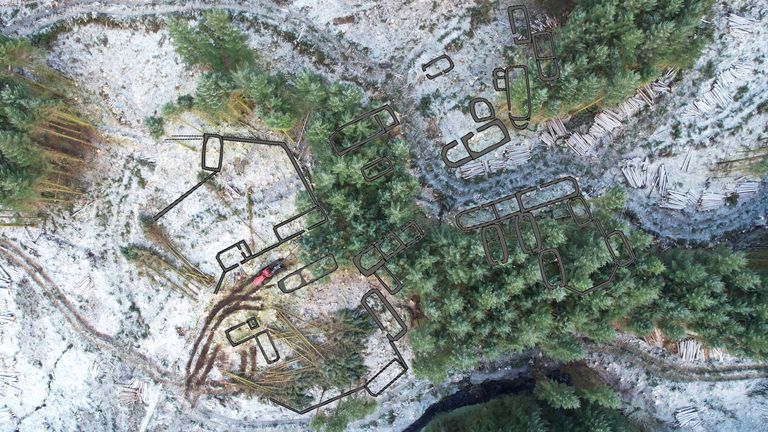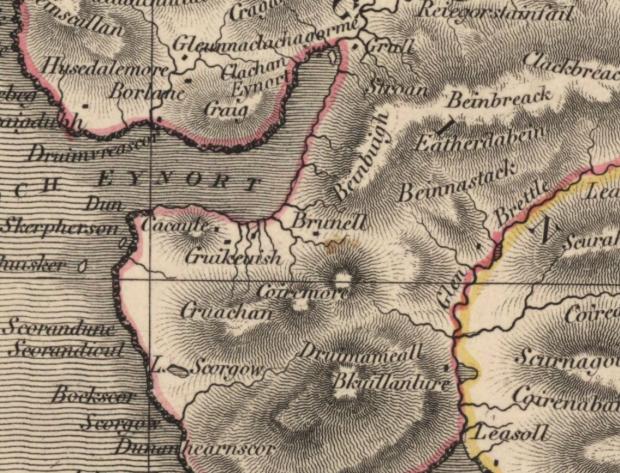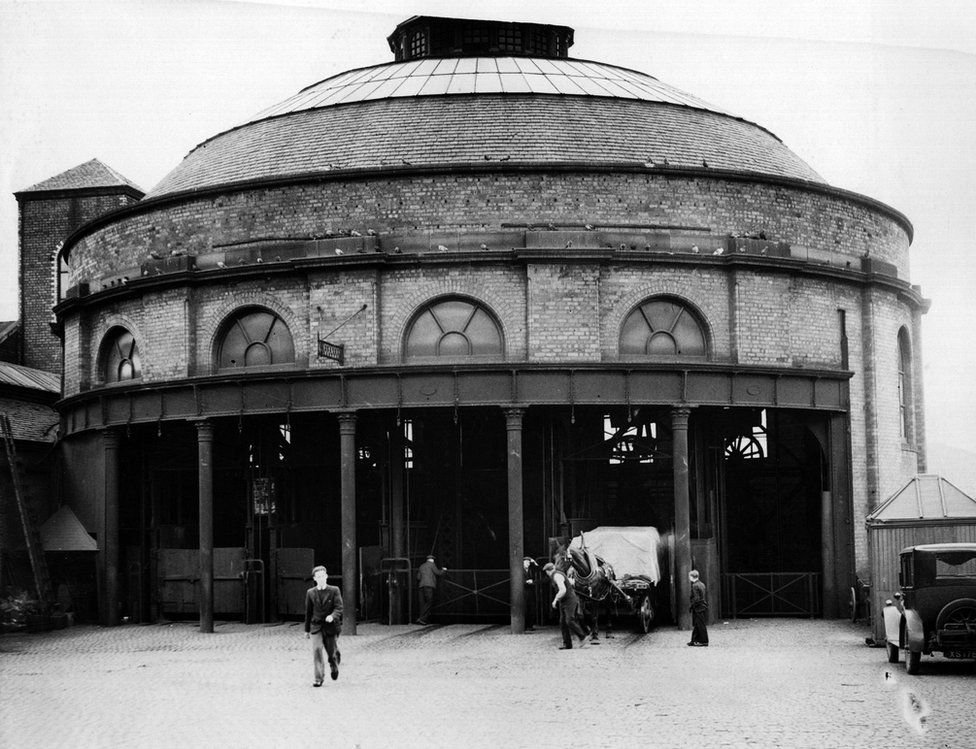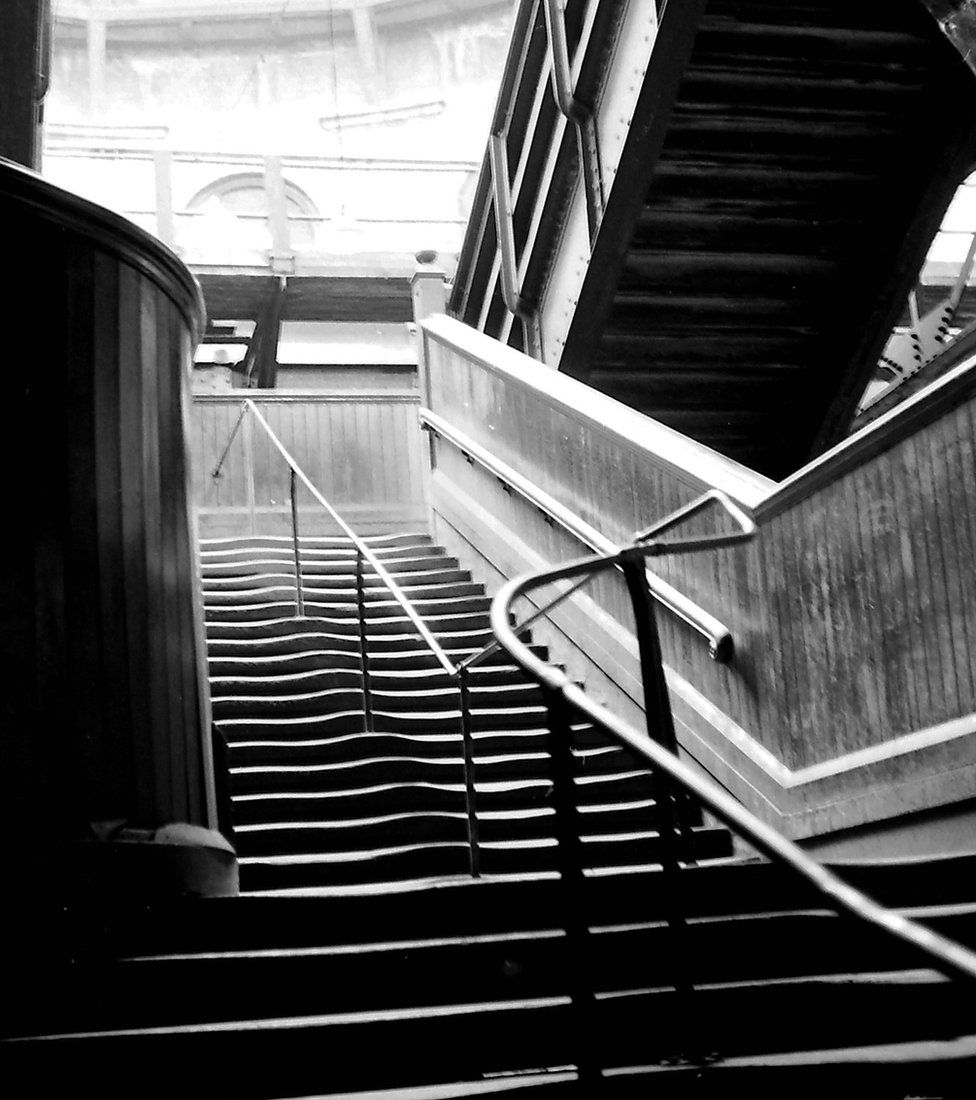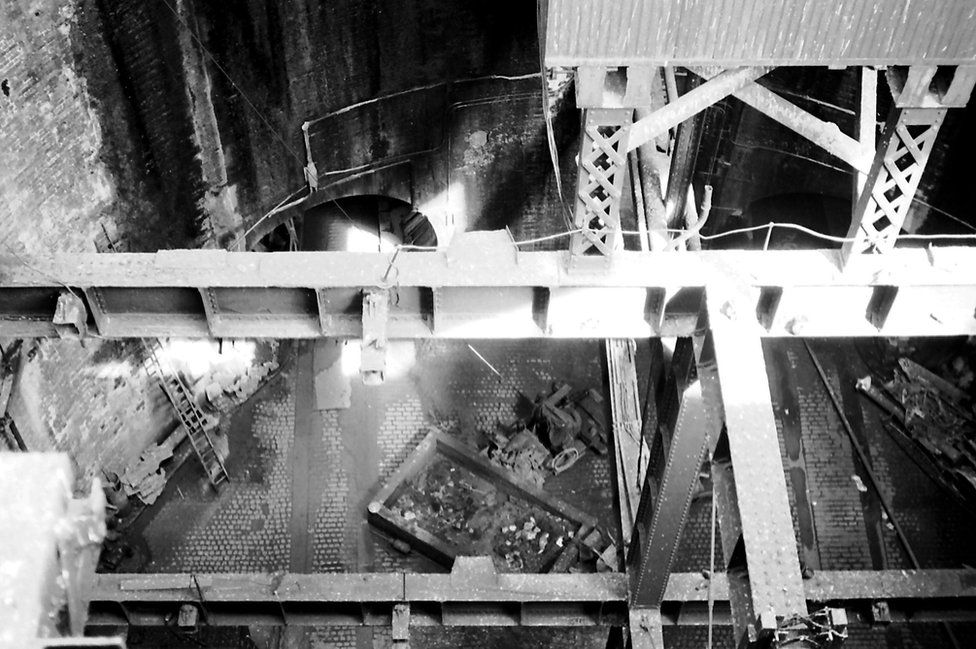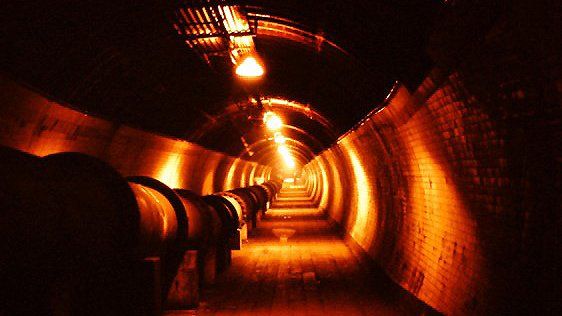Inside the long-abandoned tunnel beneath the Clyde
Deep below the River Clyde lies a once bustling thoroughfare that only a select few are now allowed to enter.
Two circular rotunda buildings, one of them in the shadow of Glasgow's famous Finnieston Crane, mark the exit and entry points for a long-abandoned Victorian tunnel.
It was in the 1890s that the Glasgow Harbour Tunnel Company began its excavations, promising a new means of crossing the river.
The city was in the grip of tunnelling mania at the time, as workers carved out the subway system and a "low level" underground platform at Central Station.
The Harbour Tunnel Company built not just one but three parallel tunnels at the site between Finnieston and Mavisbank Quay.
Two were for horse-drawn vehicles using a one-way system, and a third, a little closer to the surface, was reserved for pedestrians.
A horse drawn wagon emerges from the tunnel elevators at Finnieston in the 1920s.
A New York firm supplied six hydraulic cage lifts that would lower the horses and carts down a 24m (78ft) shaft before they clattered their way through a 5m (16ft) wide passageway.
"The horses generally have taken most kindly to the lifts, and are carried up and down without trouble," reported the Otis Elevator Company when the tunnels opened in 1895.
Pedestrians took less kindly to the experience. Access for them was via a long wooden staircase and the foot tunnel gained a reputation for being slightly leaky.
By the 1930s the pedestrians were instead sharing the vehicular tunnels - which were now being used by "motors" as well.
The well-worn treads of the wooden staircase that provided access to the pedestrian tunnel.
A columnist to the Evening Citizen described his descent in the elevators in 1932.
"Choosing the company of a horse and lorry as preferable to that of a motor-car, I soon found myself smoothly and quietly descending among a bewildering medley of wheels and cables, through which I could see the mouth of the old disused foot-passenger tunnel as we passed on the way down," he wrote.
"At the bottom water oozed through the iron sides of the great tube, which has never been totally watertight. At one place a single stalactite a foot long hung from the roof."
The tunnels were never the financial success the tunnel company hoped for, with bridges and "horse ferries" proving a more popular means of crossing the river. The city authorities began subsidising them during World War One, and took them over completely in 1926.
During World War Two they were back in use as a safe passage for dockers and shipyard workers, but in 1943 city officials, fearful of the rising upkeep costs, ordered the removal of the lift equipment. The metal was said to be needed for the war effort.
This picture of the north shaft from the late 1960s shows the flagstones leading to the vehicle tunnel entrances. The lattice-like structures are supporting the staircase.
The pedestrian tunnel reopened in 1947 and remained in use until 1980, when it was finally closed to the public. It had been a handy route for fans heading to Ibrox, but in 1988 the Bell's Bridge footbridge would offer a fresh air alternative.
By now the two vehicle tunnels had been filled in, and the foot passageway might have faced a similar fate had it not been for the very substance it was built to traverse.
Since 1938 it has provided a convenient route for a water main, still maintained by Scottish Water, who regularly send down inspectors.
For Glaswegians who still remember using the tunnel, it is often a childhood memory of a creepy passageway with alarming drips coming down the tiled sides.
Colin Duncan was a teenager when he used it to nip into the city centre from the south side, and he has fonder memories.
"I loved it, and stories of it being rat-infested and scary are just not true. It was well-lit and sort of almost warm," he recalled.
But he had his doubts about the staircase. "If only anyone looked over the wooden steps wall, they would have crept back up them.
"The stairs seemed suspended from nowhere, and it was quite a drop into the dark."
Colin Duncan has fond memories of using the tunnel in the 1960s.
The domed rotundas are now listed buildings which have seen a variety of uses over the years. The north rotunda has been a casino and restaurant - and is set for redevelopment again.
On the south bank in Govan, the rotunda has served as a pop-up Nardini's ice cream shop during the Glasgow Garden Festival, a puppet show venue, and a "Dome of Discovery", before being extensively renovated as offices for Scottish marine engineering group Malin.
Malin's marketing and business development director, Helenor Fisher, feels it is fitting that the building is now home to a marine engineering and transportation company that can trace is history back to the same era "with a shared aim of safely transporting cargo".
Last year, for Doors Open Day, the company welcomed the public into the rotunda. They were not permitted to enter the tunnel, but Helenor filmed a walkthrough video showing the visitors what it was like.
Glass windows now span the columns where horses and carts once entered the elevators of the south rotunda.
A small metal staircase which has now replaced the old wooden treads descends into the shaft before concrete steps lead into the tunnel itself.
"I felt some trepidation as it's a pretty sharp descent," she recalled. "I remember seeing a tile with the name of the firm that made the tunnel on the wall."
"I think I imagined the tunnel itself was going to be pretty unpleasant, like a dank underpass - but I wasn't expecting it to be in such good condition or have such a precise finish given it was constructed by hand."
Walking beneath the River Clyde she splashed through a few shallow puddles of brown water. Some subway style tiles have fallen from the walls but the cast iron segments holding up the roof remain solid.
"It was a pretty awe inspiring experience," said Helenor.
"It really hits you when you're in there that this is a piece of 130-year-old engineering - and it's pretty much all in place."
https://www.bbc.co.uk/news/uk-scotland-glasgow-west-67980670








